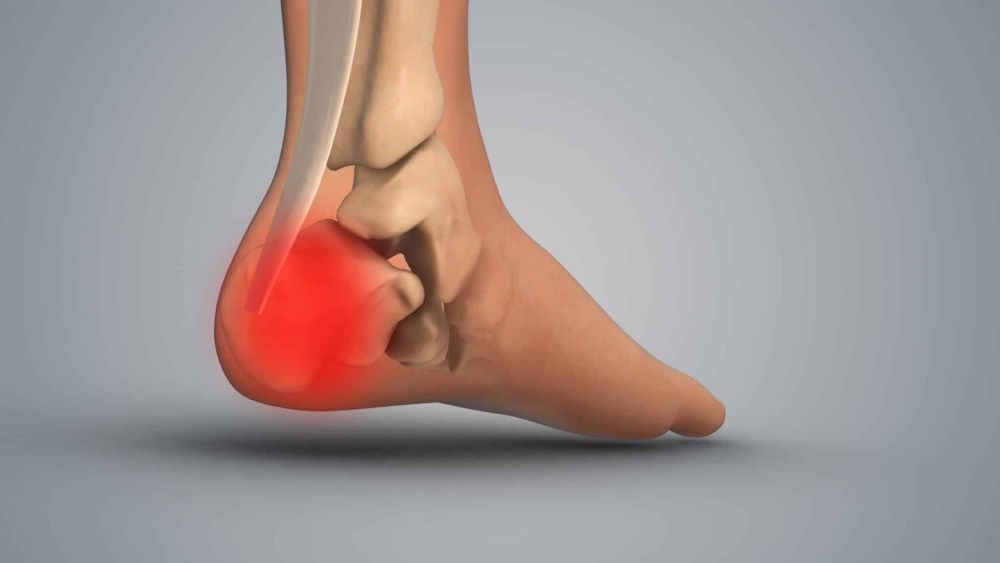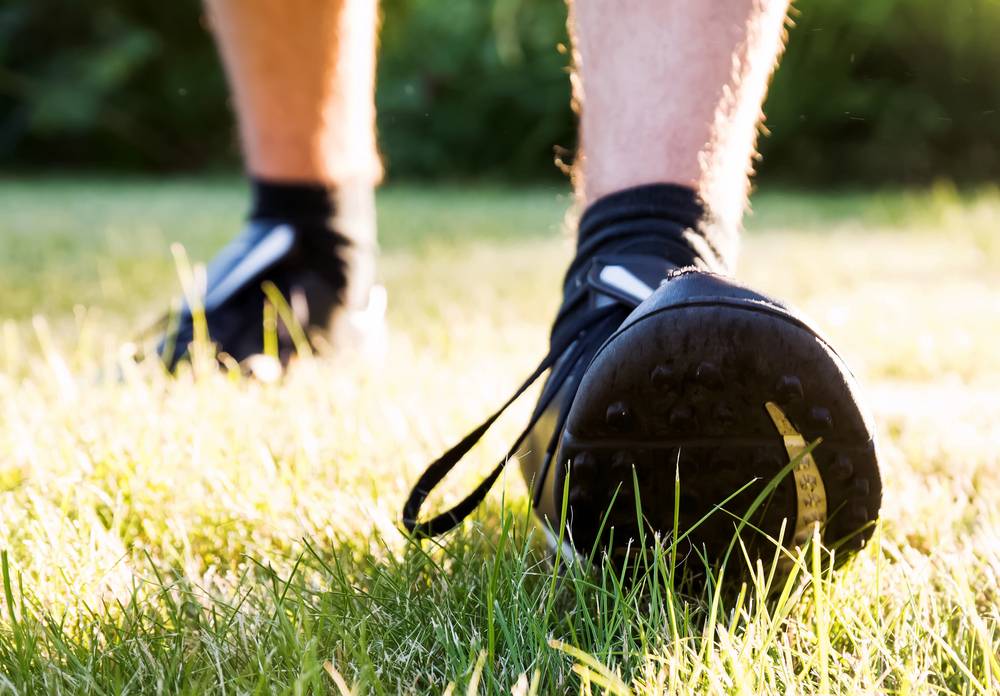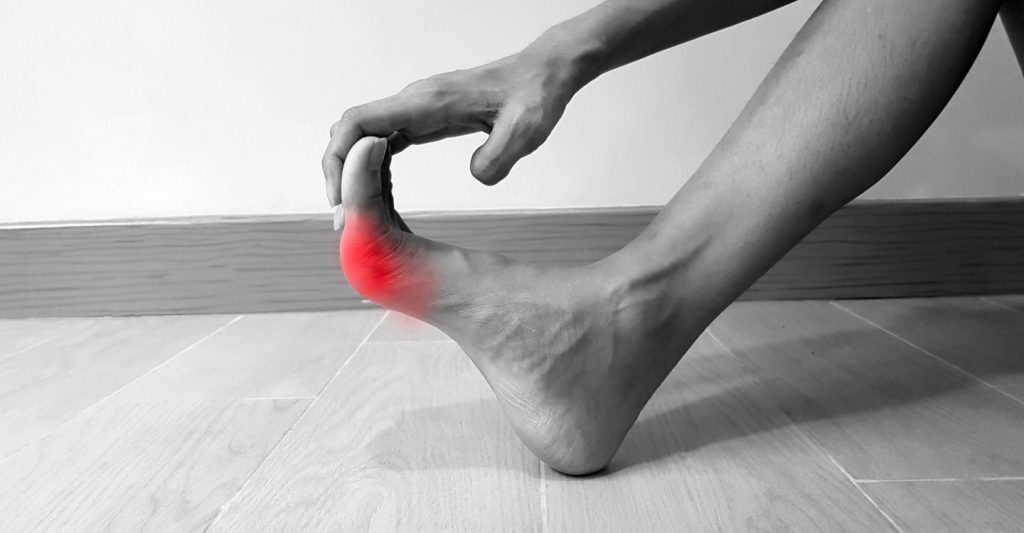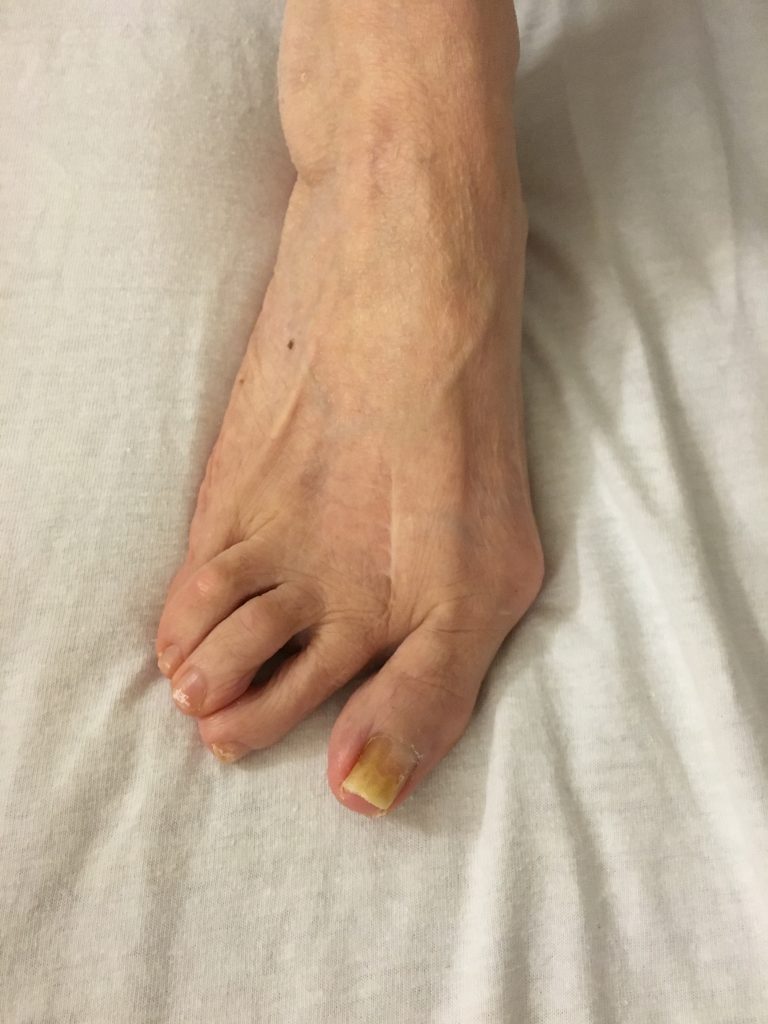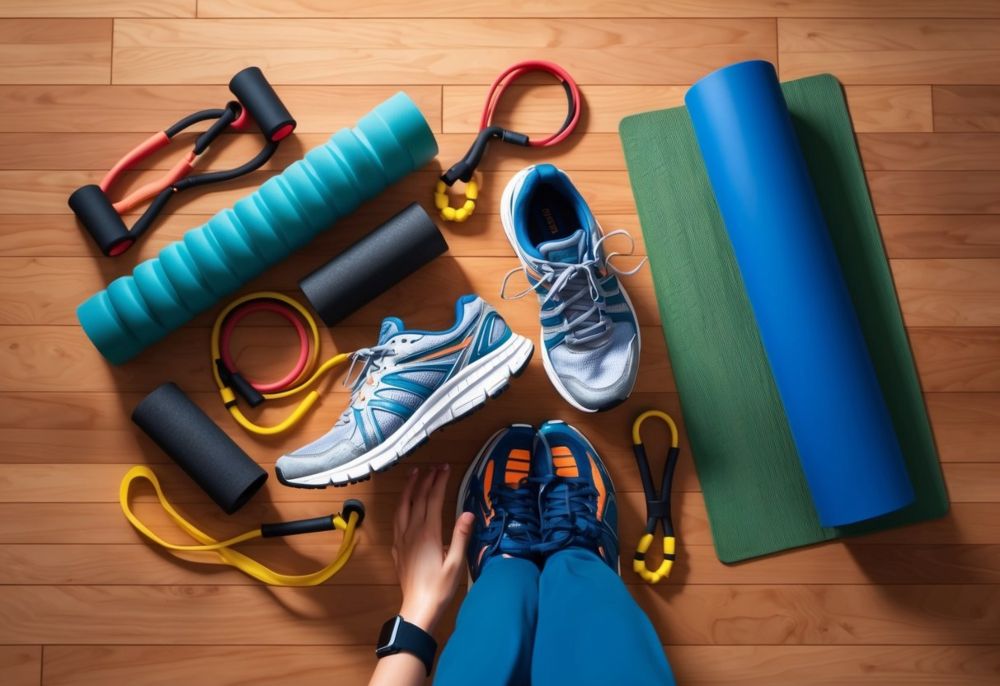
Did you know your feet absorb more force daily than a car tire on the road?
It’s true—each step sends pressure through your feet, which adds up over time. By the time you turn 40, your feet have supported you through millions of steps, and they start feeling the wear and tear.
The fat pads thin out, joints stiffen, and tiny muscles lose strength, making every walk, run, or long day on your feet feel a little harder.
But here’s the good news: You can protect your feet and keep them strong.
Simple daily habits—like wearing supportive shoes, stretching, and paying attention to your body—can keep your feet flexible, balanced, and pain-free.
As you age, wearing appropriate footwear is crucial. You might need to reconsider your shoe choices to ensure proper support.
Custom orthotics can reduce shock absorption for some individuals, protecting your natural cushioning system from further deterioration.
Key Takeaways
- Regular foot exercises strengthen muscles and maintain flexibility to prevent pain and injury.
- Proper footwear provides the necessary support as the natural cushioning in your feet diminishes after 40.
- Maintaining foot health impacts your overall mobility and enables you to stay active throughout your later years.
Why Foot Health Changes After 40
Your feet undergo significant changes as you age, particularly after 40. These changes affect your mobility, comfort, and overall foot function due to natural aging processes and the cumulative effects of decades of use.
According to a 2020 study in the Journal of Foot and Ankle Research, plantar soft tissue thickness reduces by nearly 30% with age, contributing to foot discomfort.
Natural Changes in the Aging Foot
As you enter your forties, the fat pads on the soles of your feet begin to thin out. This natural cushioning ability reduces as you age, making your feet more vulnerable to pain and pressure.
Your feet may widen or change in size as the ligaments and tendons loosen over time. This can lead to surprising changes in shoe fit, even if you’ve worn the same size for decades.
The big toe often develops stiffness, which may be an early sign of osteoarthritis or degenerative joint disease. Genetics and lifelong patterns of overuse can influence this condition.
Conditions like flat feet may become more pronounced after 40, as arch support weakens. Your Achilles tendon might also lose elasticity, contributing to decreased ankle mobility and increased stiffness.
The Importance of Your Feet as Shock Absorbers
Your feet serve as your body’s primary shock absorbers, dispersing impact forces when you walk, run, or jump.
After 40, this critical function often becomes compromised, increasing stress on your joints and tissues.
The plantar fascia, a thick band of tissue that runs along the bottom of your foot, can become less flexible with age. This may result in heel pain or plantar fasciitis, especially with increased activity.
As tissues collapse, arthritis risk increases. Your feet require more support to maintain proper function and prevent pain from rheumatoid arthritis or osteoarthritis.
Risk factors that can accelerate these changes include:
- Excessive weight
- Poor footwear choices
- History of foot injuries
- Certain health conditions like diabetes (which can cause neuropathy)
- Muscle weakness in the feet and ankles
Protect your feet and your future with personalized care designed for active adults over 40. The Foot, Ankle, and Leg Vein Center helps you stay mobile, pain-free, and confident every step of the way. Schedule a consultation now.
Proactive Prevention: Caring for Your Feet Before Problems Begin
Taking care of your feet before issues arise is crucial after 40, when your natural shock absorbers need extra attention.
Preventative strategies can significantly reduce your risk of developing painful conditions that limit mobility and independence.
Smart Footwear Decisions
Choosing appropriate footwear is fundamental to foot health after 40.
Well-fitting shoes with adequate arch support are essential for preventing common foot problems. When shopping for shoes, look for:
- Roomy toe boxes that don’t compress your toes
- Lower heel heights (under 2 inches) to reduce pressure on the ball of your foot
- Rubber soles that provide cushioning and shock absorption
- Proper width that accommodates your foot without pinching
Avoid ill-fitting shoes that can lead to bunions, hammertoes, and plantar fasciitis. High heels should be limited to special occasions and for short durations.
Flip-flops provide minimal support and should not be your everyday footwear choice. Instead, invest in supportive shoes with proper arch contours that help maintain your foot’s natural alignment.
Daily Maintenance and Mobility Routines
Your feet benefit from consistent care and targeted movement. Begin each day with simple foot stretches to improve flexibility and reduce stiffness.
Try this quick morning routine:
- Rotate each ankle 10 times in each direction
- Point and flex your feet 15 times
- Spread your toes wide, hold for 5 seconds, and release (repeat 10 times)
Strengthening exercises like picking up marbles or scrunching a towel with your feet build intrinsic foot muscles. These exercises enhance balance and stability, which become increasingly important after 40.
Give your feet proper rest after long periods of standing or walking. Elevating your feet daily for 15-20 minutes improves circulation and reduces swelling.
Regular foot massages with moisturizing creams help maintain skin elasticity and provide sensory feedback.
Nutritional Support for Connective Tissues
Your diet plays a significant role in maintaining foot health. Consuming nutrients supporting connective tissue health is essential for preventing common foot problems.
Include these nutrients in your diet:
| Nutrient | Benefits | Food Sources |
| Collagen | Supports tendons and ligaments | Bone broth, chicken skin |
| Vitamin C | Collagen synthesis | Citrus fruits, bell peppers |
| Omega-3s | Reduces inflammation | Fatty fish, walnuts, flaxseeds |
| Calcium | Bone strength | Dairy, leafy greens, and fortified foods |
Staying hydrated also helps maintain the elasticity of your foot tissues. Aim for at least eight glasses of water daily to support overall joint and tissue health.
Identifying Problems Early: What to Watch For
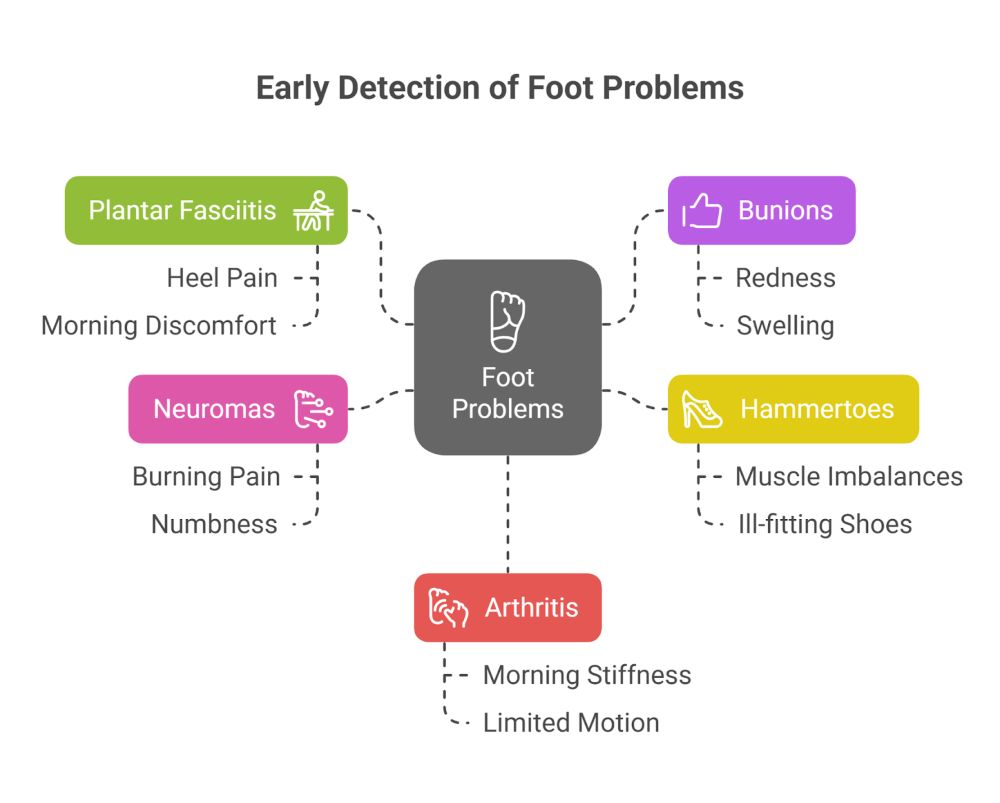
Your feet send important signals when something isn’t right. Recognizing these warning signs early can prevent minor issues from becoming serious conditions that limit mobility.
Common Foot Conditions That Appear After 40
After age 40, your feet become more susceptible to several conditions due to accumulated wear and natural aging processes:
Plantar fasciitis is characterized by sharp heel pain, typically worse with the first steps in the morning. This inflammation of the band connecting the heel to the toes affects many active adults.
Bunions – These bony bumps at the base of your big toe develop gradually as the joint shifts out of alignment. You may notice redness, swelling, and pain when wearing shoes.
Hammertoes – Toes that curl downward instead of pointing forward can develop from muscle imbalances or ill-fitting shoes. They often worsen with age.
Neuromas – These pinched nerves (commonly between the third and fourth toes) cause burning pain, numbness, or tingling. Women who wear high heels frequently are at higher risk.
Arthritis – Joint inflammation typically causes morning stiffness, swelling, and limited range of motion in your feet.
Simple Self-Assessments for At-Home Monitoring
Regular foot checks can help you catch problems early:
- Visual inspection: Examine your feet daily for:
- Unusual swelling or redness
- Cuts or sores that don’t heal
- Changes in skin color or temperature
- Thickened or discolored toenails (possible fungal infections)
- Pain assessment: Note when foot pain occurs:
- During specific activities
- At rest or night
- First thing in the morning
- When wearing particular shoes
- Gait analysis: Have someone observe your walking pattern or record yourself walking to check for pronation issues. Pronation issues are excessive inward or outward rolling of the foot.
When to Seek Professional Evaluation
Don’t hesitate to consult a podiatrist or foot specialist when you experience Persistent pain lasting more than a week, especially if it interferes with daily activities or disturbs your sleep. This could indicate a stress fracture or a serious condition.
Severe swelling that doesn’t improve with rest, elevation, and ice. Unexplained swelling may signal circulatory problems or gout.
Changes in foot shape or function, such as developing flat feet or high arches later in life, can affect shock absorption capabilities.
Numbness, tingling, or burning sensations that persist. These symptoms might indicate nerve damage or compression requiring treatment.
Adults over 40 with diabetes should have professional foot exams at least annually, as foot complications can develop rapidly and have serious consequences.
Are you noticing changes in foot comfort or balance? The Foot, Ankle & Leg Vein Center offers targeted solutions to reduce strain and keep you moving with ease, no matter your age or activity level. Contact us today.
Supportive Solutions That Promote Long-Term Foot Fitness
Proper foot support and regular professional care are essential for maintaining healthy feet as you age.
These approaches help preserve your feet’s natural function while preventing common age-related problems.
Orthotics and Foot Support Technology
Custom orthotics can significantly improve foot function after 40. These specialized inserts are designed to correct biomechanical issues and provide targeted support where your feet need it most.
Hinged ankle-foot orthoses and supramalleolar orthoses have proven especially effective for functional rehabilitation.
When choosing footwear, prioritize models with adequate arch support and shock absorption. This becomes increasingly important as the natural fat pads in your feet thin with age.
If you experience specific foot conditions, such as plantar fasciitis or bunions, consider specialized orthotic solutions. These can provide relief while allowing you to maintain an active lifestyle.
Even minimalist or barefoot-style shoes can be beneficial for some individuals. Going barefoot reduces stress on joints further up the legs and lower back, but transition gradually if you’re interested in this approach.
Regular Foot Checkups and Preventive Podiatry
Schedule annual appointments with a podiatrist after 40, even if you’re not experiencing pain. These specialists can identify developing issues before they become problematic and recommend appropriate interventions.
Regular professional care is critical if you have diabetes or circulatory issues. Your podiatrist can provide:
- Comprehensive foot assessments
- Early intervention for arthritic conditions
- Nonsurgical treatment options for common foot problems
- Guidance on anti-inflammatory approaches when needed
Between appointments, monitor your feet for changes in appearance or sensation. Foot massages can improve circulation and help you become more aware of potential issues developing in your feet.
Physical therapy exercises specifically targeting foot strength should be part of your routine. Ankle rotations and calf stretches improve flexibility and range of motion in your ankles and feet.
Whole-Body Wellness: Why Foot Health Doesn’t Stand Alone
Your feet form the foundation of your entire body’s wellness framework. The health of these natural shock absorbers influences mobility, posture, and even psychological well-being in ways many people rarely consider.
Foot Health and Systemic Aging
As you age past 40, foot health becomes increasingly connected to systemic conditions. Foot problems can limit physical activity, potentially contributing to weight gain and obesity.
This creates a challenging cycle where reduced mobility leads to additional weight, putting extra stress on your feet.
Foot care is particularly crucial for individuals with diabetes. Diabetic neuropathy can reduce foot sensation, making injuries less noticeable and healing slower.
Regular foot examinations become essential preventive care rather than optional maintenance.
Your foot arches act as natural shock absorbers, distributing force evenly through your body.
When these structures weaken, the impact transfers to your ankles, knees, hips, and spine, potentially accelerating joint deterioration.
Psychological Benefits of Mobility
The freedom to move comfortably provides significant psychological benefits. When foot pain restricts your movement, it can limit social engagement and recreational activities you once enjoyed.
Research indicates that healthy feet enable comfortable movement, essential for maintaining overall fitness and mental health. Walking, particularly outdoors, has been shown to reduce stress and improve mood.
Many patients report improved confidence after addressing chronic foot issues. Standing taller without pain improves posture, potentially affecting how others perceive you and how you view yourself.
Custom orthotic solutions can support all three arches of your feet, potentially relieving pain throughout your body and improving your quality of life through enhanced mobility.
Conclusion
Your feet carry you through life. Taking care of them becomes even more important after 40, when natural aging processes affect their structure and function.
Remember that your feet serve as natural shock absorbers with every step. The Achilles tendon plays a crucial role by storing and releasing elastic energy during movement.
Regular foot exercises strengthen the muscles that support your arches. Try these simple daily exercises:
- Toe curls with a towel
- Ankle rotations
- Calf stretches
- Gentle foot massage
Proper footwear is non-negotiable. Invest in shoes with good arch support and cushioning that fit your foot type.
If you experience recurring foot pain, consult an orthopedic specialist. They can diagnose issues early and recommend appropriate treatments before problems worsen.
Orthotic solutions can provide needed arch support and stability for those with flat feet. Custom orthotics are especially beneficial after 40.
Don’t forget that core stability also affects foot health. A strong core helps maintain proper alignment from head to toe during movement.
Your feet can continue serving you well for decades with consistent care and attention. Prevention is always easier than treatment.
Protect your feet and your future with personalized care designed for active adults over 40. The Foot, Ankle & Leg Vein Center helps you stay mobile, pain-free, and confident every step of the way. Contact us.
Frequently Asked Questions
Why do my feet hurt more after turning 40?
After 40, natural fat pads in your feet start to thin, reducing shock absorption. Aging also affects joint flexibility and muscle strength, leading to more pain and fatigue, especially during long periods of standing or walking.
What are the best exercises to keep feet healthy after 40?
Toe stretches, towel scrunches, marble pickups, calf stretches, and balance drills help strengthen foot muscles and improve flexibility. These exercises can reduce pain and help prevent common age-related foot problems.
Do I need special shoes for aging feet?
Yes, wearing shoes with a wide toe box, good arch support, and cushioning can help protect aging feet. Avoid high heels or narrow shoes that increase joint pressure and can cause bunions or calluses.
How can I tell if I need orthotics after 40?
Orthotics may benefit you if you have ongoing heel pain, flat feet, arch strain, or balance issues. A podiatrist can evaluate your gait and foot shape to determine the best type of support.
Can foot problems affect other parts of my body?
Yes, poor foot alignment can lead to knee, hip, and lower back pain. Keeping your feet healthy helps support your entire body’s movement and posture, reducing overall discomfort.
What nutrients help maintain foot health after 40?
Vitamin C, collagen, omega-3s, and calcium support joint, ligament, and tendon health. Staying hydrated also helps maintain elasticity in connective tissue, which is key to absorbing impact.
When should I see a podiatrist about foot pain?
See a podiatrist if you experience persistent foot pain, numbness, swelling, or visible changes like bunions or arch collapse. Early evaluation can prevent bigger issues and keep you moving comfortably.




